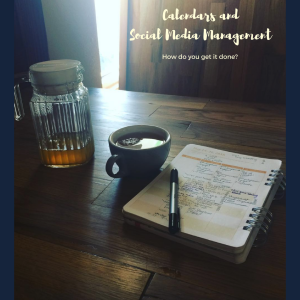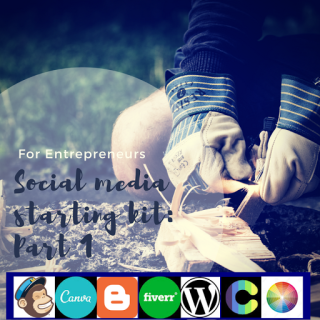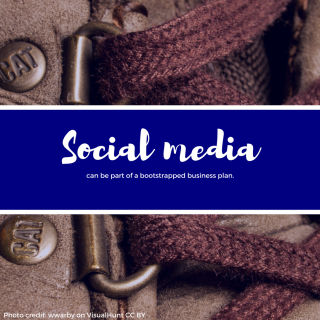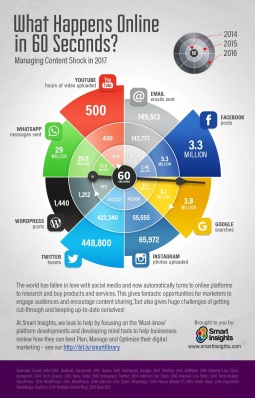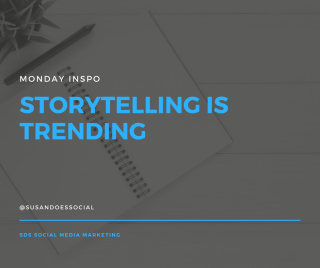You’ve got a profile, you’ve got ideas for a few posts and images, and now it’s time to begin posting. But, how do you bring strategy in? When do you post? Where do you post? How do you keep from becoming a slave to your social media?
That’s where the next two crucial elements of social media management come in: calendars and management.
First off, each social media platform has different needs, and each audience within the platform has different expectations. The average consumer expects a response from a corporation in Twitter, and 72 percent of people who complain on Twitter expect a response within an hour, per the HubSpot blog. Otherwise there are standard best practices for when to post and how often to post on each network.
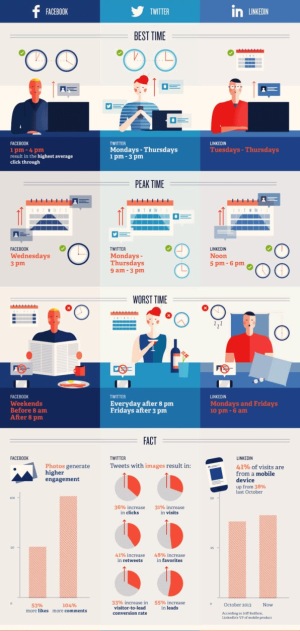 |
| Image courtesy of Fast Company |
SproutSocial posted earlier this year about the best times to post on each social media network for engagement. It is an incredibly thorough post, and I would recommend reading it to begin charting your content plan.
Keep in mind, this is for scheduled posts. In Part 4, we’ll go over how to respond and engage, but right now we’re focused exclusively on scheduling your content.
Calendars
Despite the lovely photo at the top of this post, I do not use a paper calendar to schedule my content. Well, that’s mostly true. Here’s my exact approach.
At the beginning of the month, I look through the client’s content–do they have any special events coming up, holidays, content we’ve been working on for some time? Those elements will go into the calendar first. Then, we add in the other content we have available (blog posts and newsletters) and searchable posts–#TBT or #TravelTuesday or #WednesdayWisdom. One that’s completed, the Excel calendar template I’ve been working on is handed to the client for approval before the month begins. Once approval happens, it’s time to get to work.
Hootsuite has been my go-to tool for a few years now. It is easy to use, for small businesses it is free, and it allows you the flexibility to manage three networks, which is really all that a small business needs in the beginning. //clicktotweet.com/embed/00aIb/5You can schedule a post as far in advance as you like, and it keeps an archive for you as well as produces monthly analytics for each platform. This makes it possible to hit the best times witch scheduled content, even if you are not available for posting. It also helps with tags and spelling–most of us are better from a laptop than our phones. Buffer, HubSpot and ViralTag are other options for social media management as well.
Management & Getting the Most from Your Content
Now, I would never recommend you post a piece of content only once. Peg Fitzpatrick as coined the phrase “Peg It”, which describes exactly how to get the most mileage from a piece of content, specially with images. (If you don’t have Pinterest or Google+, skip those steps, but continue using the process!)
Peg every blog
- Write multiple interesting and click-worthy versions of the blog title.
- Create three images in Canva: 735 pixels by 1103 pixels, 940 pixels by 788 pixels, and 876 pixels by 438 pixels.
- Pin the 735 pixels x 1103 pixels image on Pinterest with two links (one in the description field and one in the source field) back to blog post. Embed the pin on your blog post with the Pinterest widget.
- Share the link to your post on LinkedIn with the 940 pixels by 788 pixels image. Make sure the image name matches the title of your post or LinkedIn will show image819809754.jpg which isn’t impressive.
- Create a longer post on Google+ with the 735 pixels by 1103 pixels image, a link to the blog, and a link to the Pinterest post.
- Share on Facebook profile and page with the 940 pixels x 788 pixels image with less text than the Google+ post. Add a question to start the conversation on Facebook and two links: one to the blog and one to the Pinterest post.
- Tweet the blog post with the 876 pixels by 438 pixels image.
- Schedule additional tweets with quotes from the post using the different titles.
- Share your article in relevant LinkedIn and Facebook groups and Google+ communities.
- Add relevant hashtags when you share your post so more people can find it.
I would add a few tips here…
For this post, “Pegging it” looks like this:
Twitter
The Social Media Starting Kit: Part 3
Is your social media for your brand ruining your life?
Are you managing social media or is it managing you?
Change the game: schedule 80% of your content and focus on quality engagement for your brand
Canva
 |
 |
Hashtags
#strategy #digitalagency #marketingagency#womenentrepreneurs #branding#contentmarketingstrategy #contentmarketing#contentcreator #blogmanagement#entrepreneur #onlinebusinessmanager#projectmanager #projectmanagement#socialmediamarketing #digitalmarketer#blogmanagement #texas#socialmediamanagerlife #socialmediamanagement #growthhacking#entrepreneur
Additionally, Mike Kawula and others recommend recycling content. In his two week class Twitter Marketing That Sells, which I would highly recommend for any small business on Twitter, recycling excellent content is one of the key strategies. And, to begin recycling it even before the first posting is even better.
So, by using a calendar to create a content plan for the month, “Pegging” each piece of content to get the maximum value from it, recycling content to ensure visibility, and executing the content plan with a tool like Hootsuite, 80% of your social media content can be planned and posted in advance, freeing you to engage with your audience in a more open and authentic way.
//clicktotweet.com/embed/3UJZb/5
Tune in next time to read more about engagement; specifically how and when to engage as a business on social media.
//assets.pinterest.com/js/pinit.js

